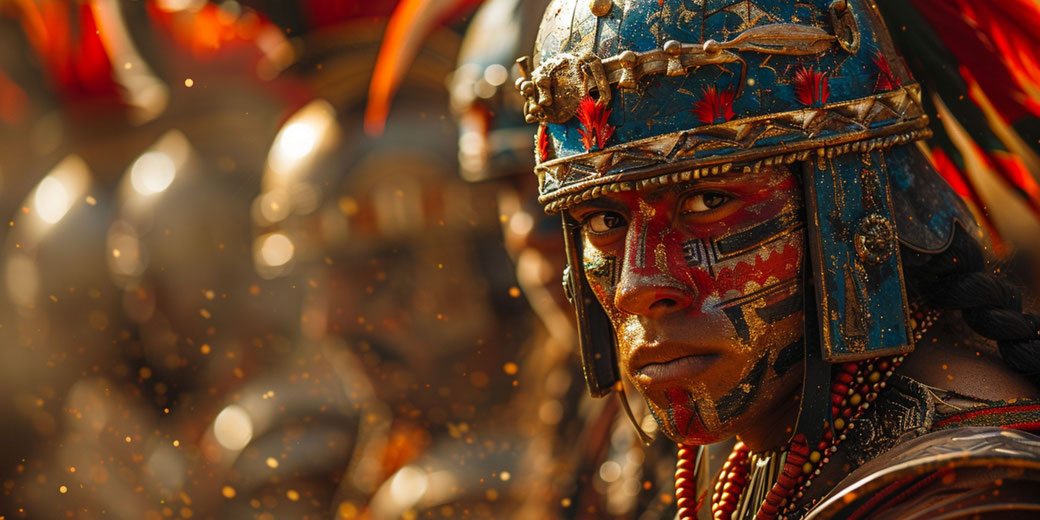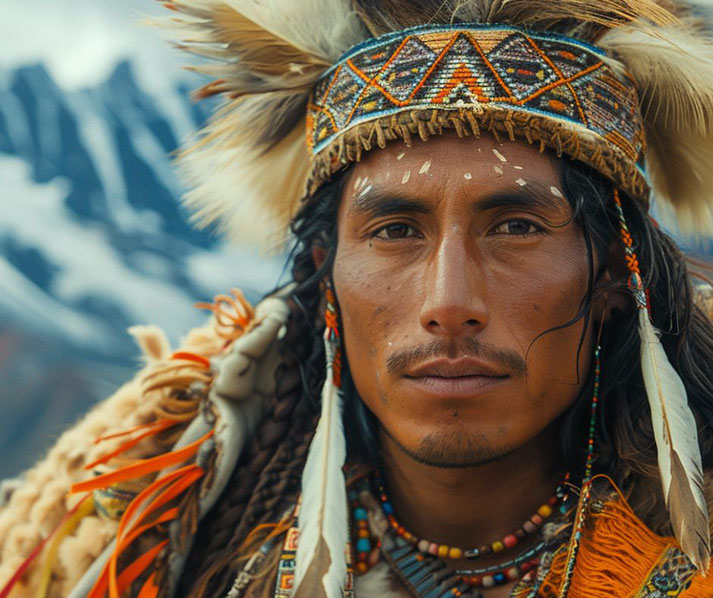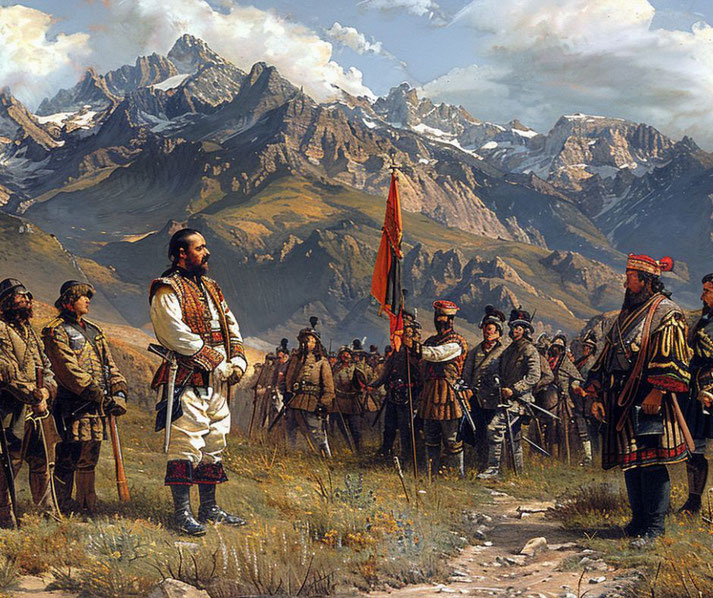The Inca Civil War: Why two brothers fought a ruthless campaign to control an empire

High in the Andes in the 16th century, a fierce struggle broke out between two royal brothers. The ensuing conflict tore apart the fabric of a mighty empire just as European conquerors set their sights on the New World.
What led to the clash between Atahualpa and Huáscar?
Why did their battle for supremacy leave an empire in ruins?
And how did it ultimately pave the way for Spanish conquest?
How the Inca Empire had become a superpower
The Inca Empire, at its zenith, was a marvel of organization and power, stretching along the western coast of South America and encompassing parts of modern-day Peru, Ecuador, Bolivia, Chile, and Argentina.
Founded in the early 13th century by the first Sapa Inca, Manco Cápac, the empire flourished under a succession of rulers, each expanding its territories and influence.
By the early 16th century, the Inca Empire was the largest empire in pre-Columbian America, with a sophisticated network of roads, agriculture, and administration.
The death of Huayna Capac, the 11th Sapa Inca, around 1525, however, set off a chain of events that would lead to the empire's downfall.
Huayna Capac succumbed to a mysterious illness, believed by many historians to be smallpox brought by Europeans, which had begun to spread throughout the empire even before the arrival of the Spanish conquistadors.
His death left a power vacuum, as he failed to name a clear successor.

How the Inca Civil War began
The most immediate cause was the succession dispute between the brothers Atahualpa and Huáscar following the death of their father, Huayna Capac.
In the absence of a clear heir, the empire was divided, with Atahualpa ruling the northern part from Quito and Huáscar the southern part from Cusco.
Compounding the succession issue were deep-rooted tensions within the Inca society.
The empire had expanded rapidly under previous rulers, incorporating a diverse array of cultures and peoples.
This expansion, while a source of strength, also brought challenges. The newly conquered territories, particularly those in the north, were not fully integrated into the Inca political system.
Atahualpa, having spent much of his life in these northern regions, was viewed with suspicion by the nobility in Cusco, who considered themselves the true guardians of Inca tradition.
His ascent to power in Quito was seen as a threat to the established order.
Meanwhile, Huáscar, who had the support of the Cusco elite, was perceived as a defender of the old ways.
However, his rule was defined by attempts to centralize power and assert greater control over the provinces, which alienated many local leaders.
This centralizing tendency, coupled with Huáscar's increasingly autocratic behavior, created fissures within the empire that Atahualpa could exploit.
The final spark for the civil war came when Huáscar, feeling insecure about his position, demanded that Atahualpa come to Cusco to swear allegiance.
Atahualpa, interpreting this as a trap, refused and instead prepared for war.
The conflict that ensued was not just a battle for the throne, but also a struggle between two visions for the future of the Inca Empire.
The most important events of the conflict
The Inca Civil War was a brutal and prolonged conflict that ravaged the empire from 1529 to 1532.
It began when Huáscar, feeling threatened by his brother Atahualpa's power in the north, sent an army to subdue him.
The initial skirmishes were inconclusive.
Atahualpa, with his base in Quito, had the advantage of support from the newly conquered northern territories, whose leaders saw in him a chance for greater autonomy from Cusco's dominance.
He also had the loyalty of several key generals, including the formidable Chalkuchimac, who would play a crucial role in the conflict.
In contrast, Huáscar's support was centered around the traditional Inca heartland, with its seasoned but somewhat complacent military.
The turning point came in 1531 with the Battle of Chimborazo, a decisive encounter where Atahualpa's forces, led by Chalkuchimac, inflicted a crushing defeat on Huáscar's army.
This victory significantly weakened Huáscar's position, leading to defections among his ranks.
In the aftermath of Chimborazo, Atahualpa's forces swept southward, capturing key cities and gaining support along the way.
Huáscar, increasingly isolated, was finally captured in 1532 near Cusco. With his brother prisoner, Atahualpa declared himself the sole ruler of the Inca Empire.
The sudden arrival of the Spanish
Unfortunately, the conflict had weakened the once-mighty Inca state, leaving it vulnerable to external threats and internal divisions.
The war's most immediate consequence was the consolidation of Atahualpa's power as the undisputed ruler of the empire.
However, his victory was short-lived. In 1532, just as Atahualpa was preparing to assert his authority over the entire empire, Francisco Pizarro and his band of Spanish conquistadors arrived in Peru.

The Spanish, with their superior weaponry and tactics, quickly capitalized on the discord sown by the civil war.
Pizarro captured Atahualpa in the Battle of Cajamarca in November 1532, effectively taking control of the empire.
The ransom and eventual execution of Atahualpa marked the beginning of the end for the Inca Empire.
The fall of the Inca Empire had far-reaching consequences for the region's indigenous peoples.
The Spanish imposed their own political, social, and economic systems, fundamentally altering the Andean way of life.
The introduction of new diseases, such as smallpox, further devastated the indigenous population, leading to a dramatic decline in their numbers.
The once-powerful Inca Empire, which had dominated the Andean region, was replaced by Spanish colonial rule.
What do you need help with?
Download ready-to-use digital learning resources
Copyright © History Skills 2014-2024.
Contact via email
With the exception of links to external sites, some historical sources and extracts from specific publications, all content on this website is copyrighted by History Skills. This content may not be copied, republished or redistributed without written permission from the website creator. Please use the Contact page to obtain relevant permission.





